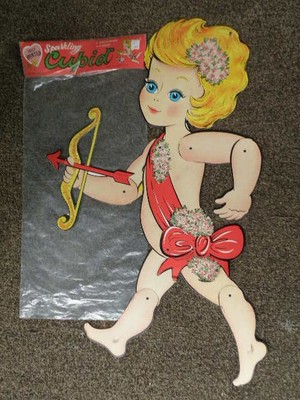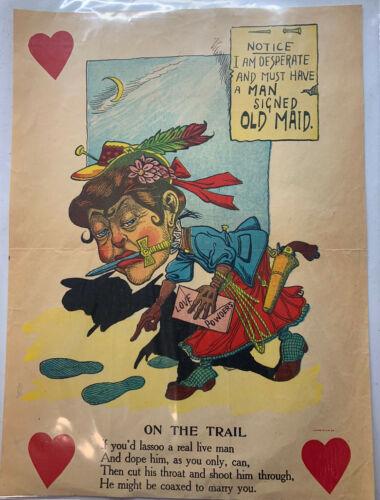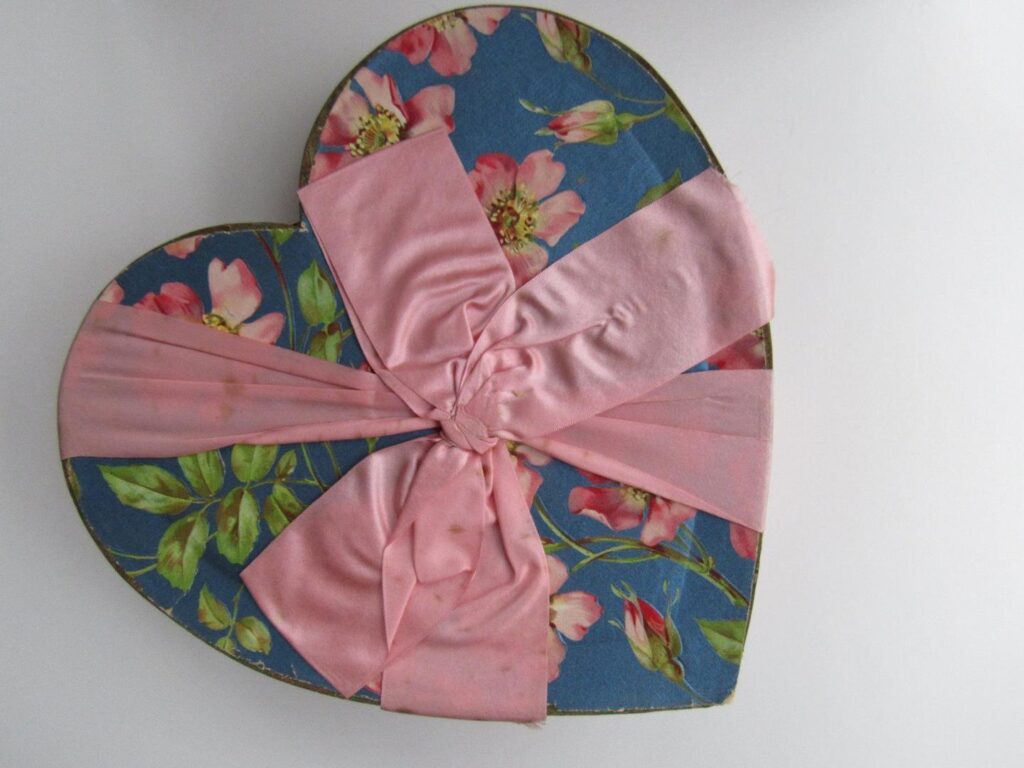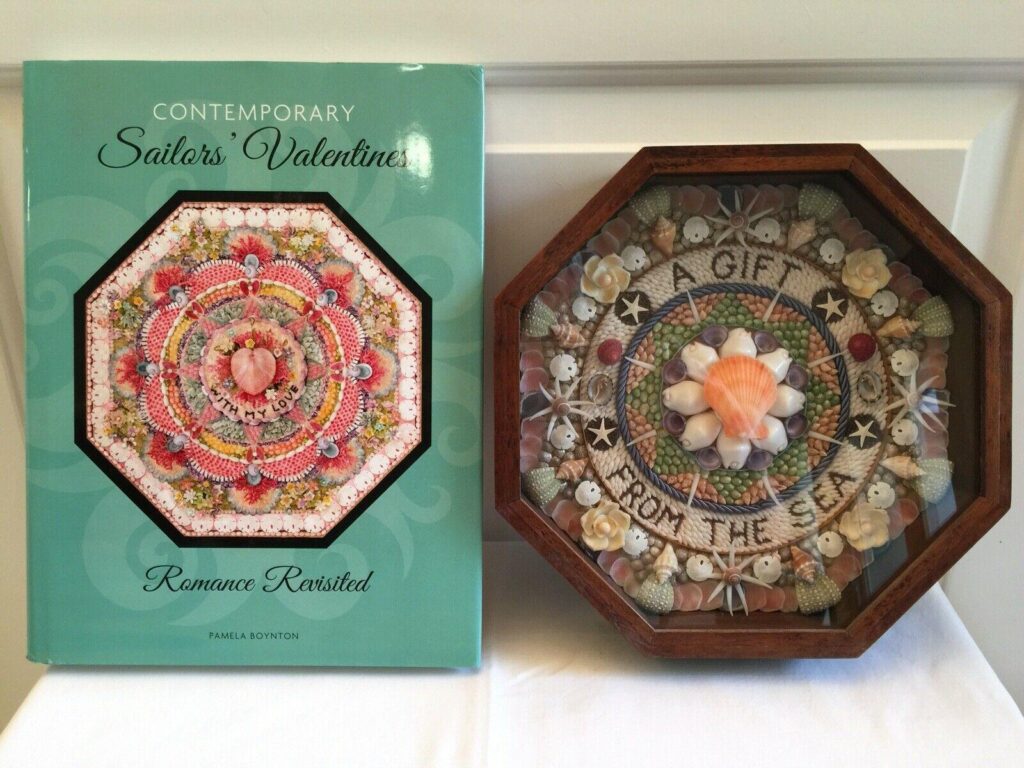BLOG
Finds and Interests

Image Source: WorthPoint
Just a few days before Valentine’s Day, I found myself rustling through the overstimulating shelves and displays dedicated to the holiday at my local big-box retailers. To secure the perfect Valentine’s Day décor for my first annual Valentine’s soirée, I waded through a sea of red, pink, and purple Valentine-themed graphics and heart-shaped boxes of chocolate. However, while many items seemed appropriate for the occasion, the lack of detail and character left me feeling less than exuberant. That could be how it is for a romantic like me—we yearn for the art, craft, and love found only in vintage and antique Valentine’s Day collectibles.
Despite the origins of Valentine’s Day tracing back centuries, the holiday has largely become commercialized. The traditions and sentiments we know and love—primarily from the Victorian era—are better reflected in the unique craftsmanship of the older and often handmade artistries that loved ones exchanged. Here are a few of the quirky ideas that I love.
He Loves Me, He Loves Me … Not
Before the Industrial Revolution and increased postal service efficiency created mass-produced cards, Valentine’s Day greeting cards were handmade. This era embraced maximalism, and the more elaborate the card, the more heartfelt the sentiment. Widely available on online platforms, such as eBay and Etsy, these cards have a wide range in price, with some only selling for $2 and others fetching more than $100. The most valuable cards are typically the oldest, such as those made by the New England Valentine Company, but even vintage Hallmark cards can be potentially useful.
I appreciate the sentiment behind these traditional cards, but what if you were appalled by the one who had their eyes upon you? During the Victorian period, dating back to the 1840s, sending “hate mail” to your unlucky victim was deemed socially appropriate. Referred to as vinegar valentines, penny dreadfuls, or comic valentines, these cards often featured an illustration and a short line of poetry that insulted the recipient. The best part about these cards was that someone could send one anonymously. The intention behind this phenomenon was to expand the holiday to include a range of different people, as well as a range of other emotions.

Image Source: WorthPoint
Compared to other period cards, only some surviving examples of vinegar valentines exist. Their relative rarity is because people were likely to preserve sentimental valentines like those people exchange today. Most cards sell in the $5–$40 range, but some are in the $100–$200 range, and lots can surpass that. Influencing factors include age, condition, rarity, subject matter, and historical significance. Older vinegar valentines are typically more valuable, especially those from the late 19th century and early 20th century.
Locked into Love

Image Source: WorthPoint
While the heart symbol— two curved lines meeting in a V-shape—has long been a universal symbol of love and affection, it differs from how anatomy books first depicted the heart. Some think the iconic pictogram is associated with fidelity, while others believe it is modeled after human anatomy. Although potential theories can be curiosities, some scholars argue that the heart symbol may have been accidentally created during the Middle Ages in a failed attempt to draw representations of ancient medical texts. Due to this organ’s association with love and emotion, the familiar icon was eventually adopted as a symbol of romance and love.
As time progressed and Valentine’s Day became more commercialized, along came Richard Cadbury. This mid-19th-century English chocolatier found himself able to take advantage of the cultural phenomena by producing heart-shaped chocolate boxes for sweethearts to exchange. These original Victorian designs were adorned with roses and cupids and are highly sought after by collectors today. Cadbury was a keen businessman; however, he never patented this invention, making it possible for all sorts of vendors to participate in the trend.
Valentine’s chocolate is similar, except for the box they’re in. While we see a minimalist approach to this trend today, Victorian heart-shaped chocolate boxes, like the era’s cards, came with ornate details. Companies like See’s Candies and Whitman’s often covered these boxes in silk, satin, or velvet, and they usually included lace details and giant bows. You can expect to spend between $15–$45 on more common designs with red, pink, and gold fabrics; however, unique items, such as a vintage pale blue floral chocolate box from the 1940s, typically sell at a higher price point.
Forget Me Not with a Sailor’s Valentine

Image Source: WorthPoint
Quite a rare and unusual item, sailors’ valentines were popular objects in the 19th century. To be put simply, these items were souvenirs or tokens of love. The mosaic designs could feature hundreds of different colored shells, and they typically depict nautical themes of anchors, ships, hearts, fish, and sometimes the name of the loved one or the port city. It was initially thought that sailors overseas gathered shells and created these intricate patterns of shells to give their valentines back home. However, evidence supports that these objects were purchased from curiosity shops in the West Indies, particularly the island of Barbados.
Traditional antique sailors’ valentines came in double octagonal boxes. Other makers crafted them as quadrilaterals to fit inside frames and be displayed on the wall. Although original objects are rare, contemporary versions of 20th-century artists can fetch high prices and could often go underappreciated. For example, in 2021, this Sandy Moran sailor’s valentine was estimated to sell between $3,000 and $5,000. Ultimately, Eldred’s Auction Gallery sold it for $16,250. This seems to be an exceptional piece, and these objects are more typical to fetch in the upper hundreds to lower thousands price point.
Happy Hunting!
Whether you are in the market for Valentine’s Day collectibles because you are hosting a soirée or just because you appreciate the history and the sentiment, there are various heartfelt pieces to choose from. Online marketplaces, such as Etsy and eBay, are great resources to utilize when perusing online for the real deal; however, if you want to create a contemporary version of vintage and authentic pieces, you can find many tutorials on YouTube. Even if you detest the consumerism attached to modern-day valentines, you can still celebrate anti-Valentine’s Day by sending a vinegar valentine as a prank to a friend or coworker. No matter your opinion on the holiday, it has something to offer everyone. And with that, I wish you a happy hunting!
Explore the history behind collectibles and memorabilia of other special days, such as Halloween, Thanksgiving, and Christmas.
Sarah Seippel is a freelance writer and finds much of her inspiration in her father’s unique collections. In her free time, she enjoys hunting down the best cup of coffee and pursuing for vintage deals.